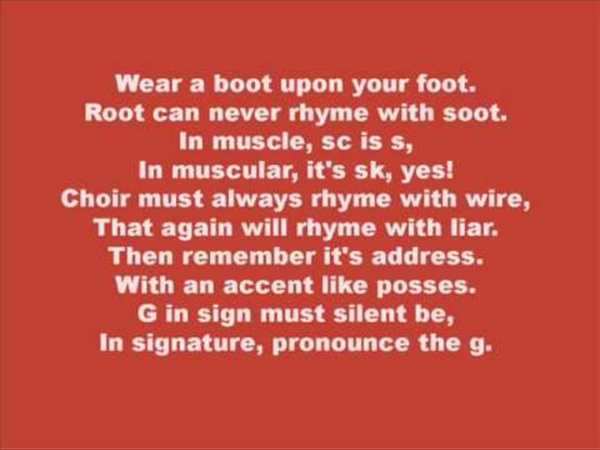



How to Improve Your English Pronunciation to Talk Like a Native “What?” “Can you say that again?” How many times do you hear this when you’re speaking? Learning to pronounce English words correctly can be one of the hardest parts of learning English. The English language has some sounds that your native language might not, so you will have to learn how to make completely new sounds. Plus, English vowels make it really tricky to know how to say a word. Ah! So that’s why we have eight tips for you, to help you pronounce English words better. 1. Before you learn how to speak, you’ll need to learn how to listen. There are many guides to get you started in learning to listen. The pronunciation practice at Many Things is really slick, especially its huge selection of lessons on minimal pairs. When you want to listen to authentic English instead of pronunciation exercises, you can watch videos on FluentU. Every word comes with an in-context definition, image, audio and example sentences, so you have enough support to make native English accessible to you. 2.
BBC Learning English | Pronunciation Tips Fonetik för nybörjare - digitalt - Mia Smith Ett ämne som berörs av språklärare med jämna mellanrum är fonetisk skrift. För ett antal år sedan var det en naturlig del av undervisningen, så ser det inte riktigt ut idag. Kanske beror detta på att de digitala verktygen hjälper eleverna med ljudbilden på ett annat sätt. Fonetik nämns inte specifikt i kursplanerna för engelska och moderna språk i Lgr11, men i det centrala innehållet finns en punkt som lyder ”Språkliga företeelser för att förtydliga, variera och berika kommunikationen som uttal, intonation och fasta språkliga uttryck, grammatiska strukturer och satsbyggnad.” Här presenterar jag ett upplägg som jag genomförde med en klass i år 9, där alla elever hade varsin iPad. Jag introducerade ämnet med en kort film om uttal från BBC. I appen fick eleverna på egen hand försöka förstå vad de konstiga tecknen betydde, några försökte också på eget initiativ skriva egna tecken när de fick orden stavade, vilket är avsevärt svårare.
BBC Learning English | Pronunciation Tips Pronunciation Pronunciation Lessons Intonation - Intonation is the rising and falling sounds of the voice when speaking. Intonation (Part 2) - Phrasing - In addition to the intonation of a statement, there is another aspect of speech that indicates meaning -- phrasing. Intonation (Part 3) - Contrast - Once the intonation of new information is established, you'll soon notice that there is a pattern that breaks that flow. When you want to emphasize one thing over another, you reflect this contrast with pitch change. Intonation (Part 4) - In any language, there are areas of overlap, where one category has a great deal in common with a different category.
Podcasts — Pronuncian: American English Pronunciation Transcript Hi again, and welcome back to Seattle Learning Academy's American English pronunciation podcast. My name is Mandy, and this is our 206th episode. Today I want to talk about the contraction I'd, (I-apostrophe-e) which can be used to contract either I would or I had. One of the biggest benefits of using contractions is that they help the rhythm of your spoken English sound more fluent. Let me be absolutely clear that the contractions for both of these words is I'd, pronounced exactly the same. I'd can be especially tricky to pronounce because we have special linking rules when we link from the d sound into either an l sound or an n sound. I'm going to focus on I'd representing I would today, and I'm going to link it into the word like because it makes a nice example of of how tiny, and how grammatically important, that little d sound of the contraction is. Listen to the two following sentences and see if you can hear the difference: I like bacon.I'd like bacon. Could you hear it?